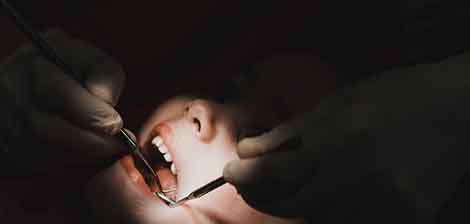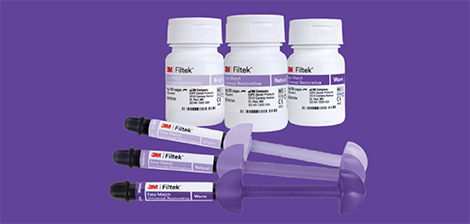<Updated 02 June 2020>
FFP2 RESPIRATOR MASKS FAQS
1. What to expect from the FFP2s?
Most FFP2s offer at least 94% filtration of particles. FFP2s are viewed as being the European equivalent of N95s (USA) or KN95s (China). They all offer similar protection but go through slightly different testing procedures by the respective European, US, and Chinese bodies, hence the different nomenclature.
HSE and PHE have carried out a review of FFP2s and N95s concluding there is no material difference between the two. They provide comparable protection if the wearer has passed a face fit test (see below).
2. What is the difference between FFP2s and FFP3s?
An FFP3 offers at least 99% filtration of particles compared to most FFP2s which offer at least 94%. FFP3s are more expensive to purchase due to their higher filtration efficiency.
PHE recommends using FFP3s when carrying out AGPs, during the current Covid-19 pandemic, but stipulates that when FFP3s are not available, FFP2s may be used. The WHO routinely recommend FFP2s.
DD will have stock of FFP3s by mid-June. The longer lead time is due to large amounts of counterfeit or non-compliant products flooding the supply chain, therefore DD is taking extra measures to ensure maximum safety. DD will only supply genuine products which requires comprehensive due diligence leading to slightly longer lead times.
3. What is the difference between valved and non-valved?
The valve is a comfort device. It does not affect or contribute to the level of protection but controls how much and how quickly air can escape from the respirator to reduce the build-up of heat and moisture. If the respirator wearer is ill, the valve will not stop them spreading infection as their breath or cough can enter the air without filtering as the valve opens on exhalation.
4. What is the difference between folded and moulded respirators?
Folded:
- Discreet and easy to store
- Softer fabric design enables breathability
- Offers close fit due to elastic head straps
- Not intended to offer a perfectly flush fit, however, still provides adequate protection when worn correctly and with other recommended PPE such as visors.
Moulded:
- Closer fit than folded
- Designed with the shape of the face in mind and fit snuggly to the nose, mouth, and chin
- Less comfortable to wear.
5. Are the FFP2s supplied by DD re-usable?
The manufacturer states they are non-reusable. However, the effective life can range from 2-6 hours depending on the concentration of contaminants and external factors such as air humidity, temperature, volume of air breathed in. Wearing a visor over a respirator can prolong its life.
A risk assessment should always be carried out when deciding whether to re-use between patients. If the FFP2 is damaged or has been splashed/has droplets of blood or bodily fluid on it, then it should be changed.
If an FFP2 is being re-used, it is recommended that this occurs in the same session, as per PHE guidelines. FFP2s should not be taken off and packed away for use at the next shift (after a break) or the next day.
6. Do a I need a fit test?
HSE and PHE recommend a face-fit test is carried out by a competent person (https://www.hse.gov.uk/news/face-mask-ppe-rpe-coronavirus.htm).
DD have partnered with Dakatra to offer a bespoke fit testing service to our customers. Dakatra fit testers are certified competent experts from a health service background, who have been responsible for fit testing in several UDCs and the wider NHS.
Services include:
- Fit testing: quantitative and qualitative
- Fit test training and certification with ongoing mentoring
- Fit testing equipment and re-usable respirators with P3 filters
Contact the team for exclusive DD rates: DD@dakatra.co.uk
7. What does a fit test involve?
Fit-testing typically takes 30 minutes and comprises qualitative fit-testing (testing whether the wearer can taste an intensely bitter or sweet substance sprayed into the ambient air) or quantitative fit testing (measuring the ratio of particles in the air inside and outside the breathing zone when wearing the respirator).
Fit testing is a “formal” test required, performed by an accredited individual, prior to the first wear of a respirator. Fit checking or seal checking is “good practice”, performed by the wearer every time a respirator is donned to ensure a good seal.
8. I have put on my mask and still have gaps?
Respirators come in different shapes, sizes, and designs. Everyone’s face shape is different and there is no “one size fits all” for any type of respirator. Research shows that for any one of three widely used respirators, a satisfactory fit could be achieved by less than 50% of healthcare workers tested, and for 28% of the participants none of the masks gave a satisfactory fit.
Given the scarce supply of non-counterfeit respirators, a risk assessment should be carried out to determine whether wearing a mask which may have some gaps, along with additional PPE such as a visor is suitable for the given situation. It should be noted that adjustments can be made to respirators which may allow for a suitable fit. This can be discussed with the fit tester.
References
- https://www.hse.gov.uk/news/face-mask-equivalence-aprons-gowns-eye-protection-coronavirus.htm
- https://www.hse.gov.uk/pubns/indg479.pdf
- https://www.hse.gov.uk/pubns/disposable-respirator.pdf
- https://www.journalofhospitalinfection.com/article/S0195-6701(13)00280-6/pdf
- https://assets.publishing.service.gov.uk/government/uploads/system/uploads/attachment_data/file/878750/T2_poster_Recommended_PPE_for_primary__outpatient__community_and_social_care_by_setting.pdf
- https://www.gov.uk/government/publications/wuhan-novel-coronavirus-infection-prevention-and-control/managing-shortages-in-personal-protective-equipment-ppe
- https://www.gov.uk/government/publications/wuhan-novel-coronavirus-infection-prevention-and-control/managing-shortages-in-personal-protective-equipment-ppe
- Winter S, Thomas JH, Stephens DP, Davis JS. Particulate face masks for protection against airborne pathogens e one size does not fit all: an observational study. Crit Care Resusc 2010;12:24e27.
- Danyluk Q, Hon CY, Neudorf M, et al. Health care workers and respiratory protection: is the user seal check a surrogate for respirator fit-testing? J Occup Environ Hyg 2011;8:267e270.
- Lam SC, Lee JK, Lee LY, Wong KF, Lee CN. Respiratory protection by respirators: the predictive value of user seal check for the fit determination in healthcare settings. Infect Control Hosp Epidemiol 2011;32:402e403.
- Chakladar A, Beaumont PO, Uncles DR. Respirator fit-testing e will we pass the test? Crit Care 2009;13:417.



